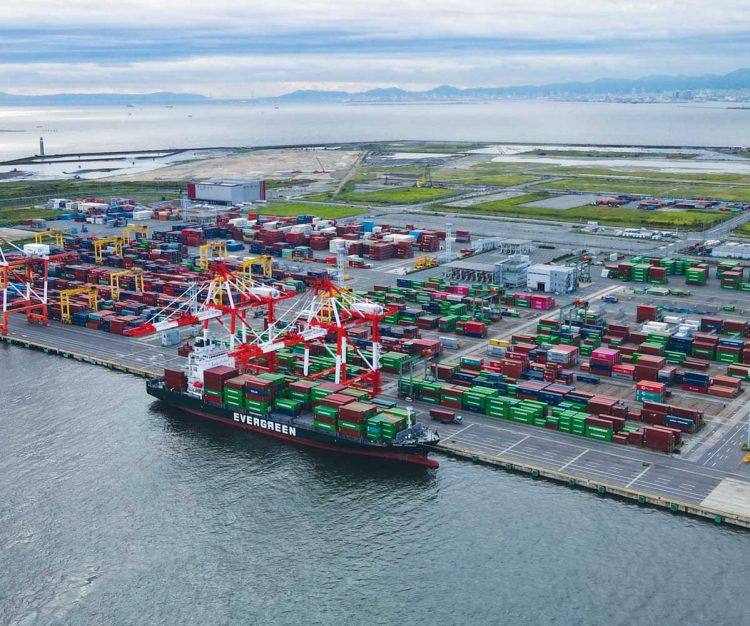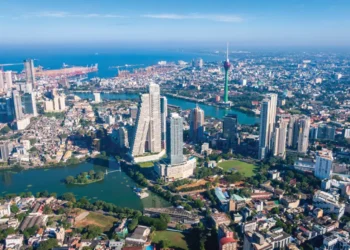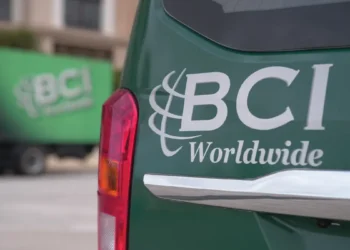IR development is the last chance for Osaka’s Yumeshima to live up to the meaning of its name: “Dream Island”
The MGM Resorts International and ORIX Group consortium, the sole applicant to develop an integrated resort (IR) in Osaka, submitted a proposal in July comprising a JPY 1 trillion investment.
 The plan states the earliest opening date for its IR would be 2028.
The plan states the earliest opening date for its IR would be 2028.
The Osaka IR candidate site is Yumeshima, a 390-hectare reclaimed island alongside Osaka Port. Yumeshima is a man-made island, reclaimed to serve as a final disposal site for trash, and also happens to be the site for the Osaka Kansai Japan Expo 2025.
In the Technoport Osaka plan devised in 1988, the three reclaimed islands adjacent to Osaka Port – Sakishima, Maishima and Yumeshima – were earmarked as Osaka’s new “downtown”, equipped with the latest technology, international trade and communications functions, and a daytime population of 200,000 people between them. The aim for Yumeshima was 60,000 residents and 45,000 daily commuters. The concept called for construction of Asia Trade Center and World Trade Center buildings and sizeable investments were made for infrastructure.
However, with the economic slump after the bubble burst, the number of people planning to move into the buildings, dropped, and there were no buyers for the developed land.
Osaka then put together a bid to host the 2008 Olympics. The plan was for the main venues and arenas to be erected on Maishima and Sakishima and to use Yumeshima as the site of the Olympic Village. After spending JPY 4.8 billion (US$44 million) on the Olympic bid, the city lost to Beijing in a crushing defeat. While the Hokko Technoport Line Osaka, which was designed to transport spectators, cost the third sector company Port Transport System Co., Ltd. (OTS) JPY 187 billion (US$1.7 billion), without a reason to connect to Yumeshima the plan for a subway between the three islands was abandoned.
 However, it looks like there is now a second chance for Yumeshima, which has long been viewed by locals as a spectacularly negative asset. When Osaka was successful in its World Expo bid for Osaka Kansai Japan Expo 2025, Yumeshima was set as the site. It is also now the candidate site for the city/prefecture’s IR bid. This led to resurrection of the city’s plans for a subway in July 2020 to connect Sakishima and Yumeshima on what will be called the “South Route,” as a way to access the Expo and IR.
However, it looks like there is now a second chance for Yumeshima, which has long been viewed by locals as a spectacularly negative asset. When Osaka was successful in its World Expo bid for Osaka Kansai Japan Expo 2025, Yumeshima was set as the site. It is also now the candidate site for the city/prefecture’s IR bid. This led to resurrection of the city’s plans for a subway in July 2020 to connect Sakishima and Yumeshima on what will be called the “South Route,” as a way to access the Expo and IR.
Making the decision to use Yumeshima may have been easy, but turning it into a reality hasn’t been. The recently privatized Osaka Metro, which operates Osaka’s municipal subway system, announced a JPY 100 billion (US$910 million) Yumeshima Station tower building in November 2018. However, the plan was soon deemed to be unprofitable and was withdrawn for further consideration at a later date.
Also, in April of this year, Osaka city held open recruitment for private operators, asking for proposals to develop and operate buildings on the leased land adjacent to Yumeshima Station, but in the end there were no applicants. The description for this public offering was, “The area in front of the under-construction Yumeshima Station will serve as the entrance to the World Expo from the station. The Japan Association for the 2025 World Exposition has requested that the space be developed not only as a facility to welcome the many visitors to the Expo, but as a facility that can be utilized perpetually after the event is over, as a legacy of the Expo with considerations for efficient development in Osaka city.”
 The source of hesitancy all boils down to one thing. On everyone’s minds is the fact that, “Unless IR development is confirmed, there is no future for business in this location.” Obviously no one would invest large amounts in such a location, so it makes sense that there would be no progress until the national government approves IR locations.
The source of hesitancy all boils down to one thing. On everyone’s minds is the fact that, “Unless IR development is confirmed, there is no future for business in this location.” Obviously no one would invest large amounts in such a location, so it makes sense that there would be no progress until the national government approves IR locations.
Since the Osaka-Kansai Japan Expo 2025 has already been confirmed, Osaka city must move ahead with infrastructure for water, sewage, communications and subway expansion, but expecting investment from the private sector at this point in time is hopeless. The Expo will be gone six months after it starts, and clearly Yumeshima will return to being a barren land once that happens. No one can invest in the Expo alone. Confirmed approval for IR development is the only thing that can ensure a sustainable flow of visitors for the future, which will be the signal for private sector investors to jump in. The businesses and residents of Osaka know all too well how remote and desolate Yumeshima is.
The IR location application period for local municipalities to the central government runs from October 2021 to April 2022. Candidate site examinations and approvals will all take place after that. Even if Yumeshima is approved, it will take even more time to commence investment and development.

Despite the city/prefecture’s hopes for continued economic effects spanning from Expo to IR, it goes without saying that any construction not completed in time for the 2025 Expo will be scheduled to coincide with a 2028 IR opening.
Inevitably, it is unlikely any investment or development plans will be sped up until Japan announces the final IR approvals.


































